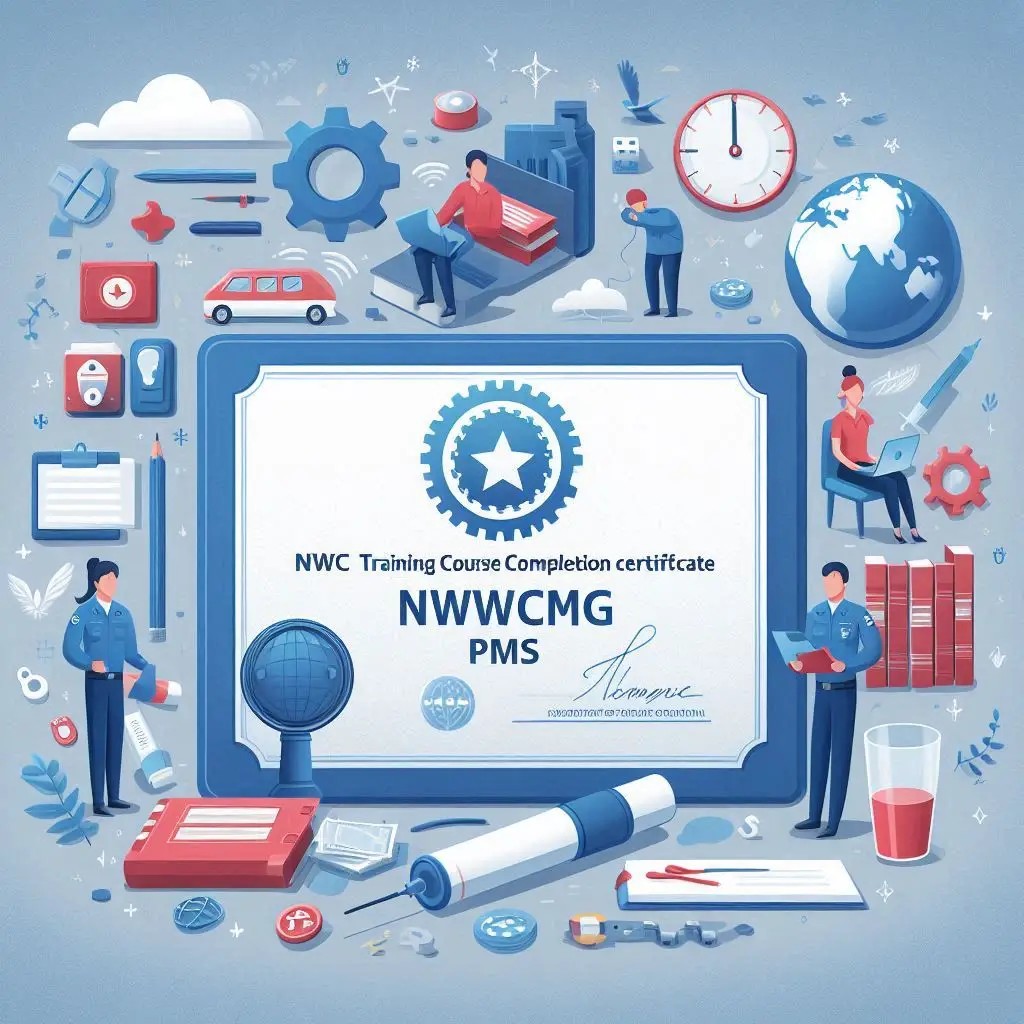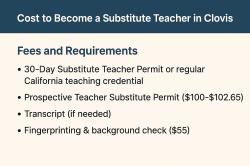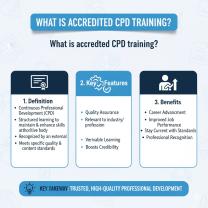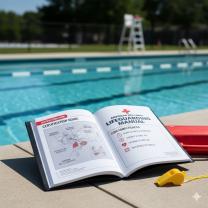How do I get a NWCG training course completion certificate (PMS)?
How to Get a NWCG Training Course Completion Certificate (PMS)
The National Wildfire Coordinating Group (NWCG) provides training for wildfire management and emergency response professionals. Upon completing certain NWCG courses, participants receive a Training Course Completion Certificate (PMS), which serves as official proof of their training and qualifications.
What is a NWCG PMS Training Certificate?
A PMS (Publication Management System) certificate is an official document issued by NWCG that verifies a participant has successfully completed a specific training course. It is often required for career advancement, qualification tracking, or meeting agency requirements for wildfire response personnel.
Steps to Get a NWCG Training Course Completion Certificate
1. Register for an NWCG-Approved Course
Identify the course you need from the NWCG course catalog.
Courses may be delivered online, in-person, or as a hybrid of both.
2. Complete the Training Requirements
Attend all required sessions and complete any assignments or practical exercises.
Follow the course guidelines and meet the minimum performance standards.
3. Pass Any Required Exams or Assessments
Some NWCG courses require a written or practical exam to demonstrate competency.
Ensure you meet or exceed the passing criteria.
4. Request Your PMS Certificate
After successfully completing the course, your instructor or training coordinator will submit your completion to NWCG.
Certificates are typically issued electronically through the NWCG training records system.
5. Access and Save Your Certificate
Once issued, you can download and print your PMS certificate for your records.
Keep a copy for professional portfolios, agency compliance, or continuing education documentation.
Why the NWCG PMS Certificate Matters
Professional Recognition: Validates your skills in wildfire management and emergency response.
Career Advancement: Often required for promotions or specialized roles within wildfire agencies.
Compliance and Tracking: Ensures that personnel meet agency and NWCG standards for training and readiness.
Final Thoughts
Obtaining a NWCG Training Course Completion Certificate (PMS) is a straightforward process if you follow the course requirements and complete all assessments. This certificate is a valuable credential for anyone working in wildfire management, emergency response, or related fields, helping you demonstrate your qualifications and commitment to safety and professional excellence.
I can also make an SEO-optimized version with headings, meta description, and keywords to help it rank higher on search engines. Do you want me to do that?
The National Wildfire Coordinating Group (NWCG) plays a crucial role in standardizing training and qualifications for wildland fire and all-hazard incident personnel across various agencies. Obtaining and managing your NWCG Training Course Completion Certificate (often referred to as PMS 921-1) is essential for career progression in wildland fire.
Here's an overview of how to get, manage, and utilize your NWCG certificates:
1. How to Get an NWCG Training Course Completion Certificate (PMS)
An NWCG Training Course Completion Certificate (PMS 921-1) is issued to students who successfully complete an NWCG-sponsored course. These courses are typically offered through NWCG member agencies (such as the Forest Service, Bureau of Land Management, etc.) or approved training providers.
Instructor-Led Training (ILT): For in-person or virtual instructor-led courses, the course coordinator or sponsoring agency is responsible for issuing the certificate upon successful completion of all course requirements.
Self-Directed (Online) Training: For online NWCG courses, you can often print your certificate directly from the online learning platform. For example, if you complete a course through the Wildland Fire Learning Portal (WFLP) or NFA Online, you would typically:
Log into your account.
Navigate to your "Completed Work" or equivalent section.
Select the course title.
Look for an option like "Print Certificate."
It's important to note that only NWCG member agencies are authorized to issue the official NWCG Training Course Completion Certificate (PMS 921-1). Non-member agencies, educational institutions, or private training providers may issue their own certificates of course completion, but these are not the official NWCG certificates. However, these non-NWCG certificates might still be recognized by agencies if they meet equivalent standards, as outlined in NWCG guidelines (e.g., NWCG Standards for Course Delivery, PMS 901-1).
Steps to Access Your Training Records
Unfortunately, there is no single "master database" for all NWCG course certificates across all agencies. However, you can access your training records through specific systems, primarily if you're associated with a federal or state wildland fire agency:
Incident Qualifications and Certification System (IQCS) / Incident Qualification System (IQS):
If you have ever held a "red card" (Incident Qualification Card), your course completions and qualifications are likely tracked in IQCS (for federal partners) or an equivalent Incident Qualification System (IQS) for state agencies.
Self-Registration: If you have an IQCS-produced red card, you can often self-register for a "responder account" on the IQCS web portal. This allows you to view your qualification record, including completed training, position task books (PTBs), and experience.
Contact Your Agency: The most reliable way to access your records is to contact your agency's IQCS Account Manager, Training Officer, or Certifying Official. They have the ability to access and provide you with a copy of your IQCS/IQS master record.
Agency-Specific Records: Many agencies maintain their own internal training records. If you took a course through a specific agency, reach out to their training or human resources department directly to inquire about a copy of your records or certificate.
Wildland Fire Learning Portal (WFLP): For online courses completed through the WFLP, your completion records should be accessible directly within your account on that platform.
Verifying Completion and Credentials
NWCG uses a performance-based system for wildland fire position qualifications, meaning that simply completing training does not automatically qualify you for a position. Qualification involves a combination of:
Required Training: Successful completion of the necessary NWCG courses (documented by your completion certificates).
Required Experience: Demonstrated satisfactory performance in prerequisite positions and completion/certification of relevant Position Task Books (PTBs).
Physical Fitness Level: Meeting the established physical fitness standards for wildland fire assignments.
Currency Requirements: Maintaining currency by performing in the position within specified timeframes (e.g., typically 3 or 5 years, depending on the position).
Verification Process:
IQCS/IQS Records: Your official qualification status is maintained in IQCS/IQS, which tracks all these elements.
Certifying Official: The ultimate authority for certifying an individual's qualification in an NWCG position rests with the individual's home unit/agency certifying official. They review all documentation (certificates, PTBs, experience records) and make the final determination.
NWCG Standards for Wildland Fire Position Qualifications (PMS 310-1): This publication outlines the minimum NWCG qualification standards for national mobilization to wildland fire incidents. It details the training, experience, and fitness requirements for each position.
Common Issues in Certificate Retrieval
No Central Database: As mentioned, the lack of a single, centralized master database for all NWCG course certificates is the most common challenge. This means you generally need to remember where and when you took a course.
Lost Certificates: If you lose a physical certificate, your best bet is to contact the agency or location where you originally took the course. They may have a copy or record of your completion.
Online Course Access: Issues with printing online certificates usually involve:
Not being logged into the correct NFA Online or WFLP account.
Outdated Adobe Reader versions or browser compatibility issues.
Platform migration issues (e.g., WFLP recently migrated to a new LMS, which could cause temporary access problems).
Non-NWCG Member Training: If you took a course from a non-NWCG member instructor or educational institution, they will issue their own certificate, not the official PMS 921-1. While these courses might be recognized, their documentation and verification process might differ, and they don't grant official NWCG certification directly.
Inactive IQCS Account: If your IQCS account is inactive, you may need to follow specific procedures to reactivate it or request data transfer if your records were managed by a state IQS that needs to be imported.
If you encounter issues, always start by contacting your agency's IQCS manager or training specialist.
Using Your Certificate for Career Advancement
NWCG Training Course Completion Certificates are vital for career advancement in wildland fire and related emergency management fields:
Position Qualification: These certificates are fundamental documentation of completing the "required training" component for specific NWCG positions (e.g., Firefighter Type 1, Engine Boss, Incident Commander). Without them, you cannot be certified in higher-level positions.
Promotion and New Roles: As you accumulate more advanced NWCG training and complete position task books, these certificates serve as proof of your readiness for higher-level roles and increased responsibility on incidents.
Interagency Mobilization: Holding recognized NWCG qualifications (supported by your certificates and PTBs) allows for interagency mobilization, enabling you to work on incidents across different federal and state agencies nationwide.
Demonstrating Competency: Certificates demonstrate your commitment to professional development and possession of critical knowledge and skills, making you a more competitive candidate for positions.
Continuing Education/Currency: While not all courses require recurrent training, some positions do. Maintaining current certificates ensures you meet currency requirements for your qualified positions.
Recognition of Prior Learning (RPL): For certain positions, NWCG has an RPL process (PMS 309) that allows for the formal recognition of competencies gained through informal learning and experience. Course certificates can support an RPL application.
Your agency's certifying official is key to officially recognizing your qualifications based on your training and experience. Keep diligent records of all your certificates and training completions.













